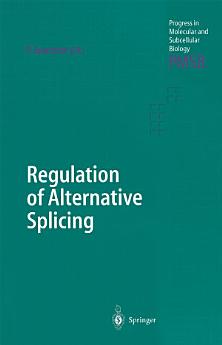Regulation of Alternative Splicing
Philippe Jeanteur
mar. de 2013 · Progress in Molecular and Subcellular Biology Libro 31 · Springer Science & Business Media
Libro electrónico
245
Páxinas
reportAs valoracións e as recensións non están verificadas Máis información
Acerca deste libro electrónico
The discovery in 1977 that genes are split into exons and introns has done away with the one gene - one protein dogma. Indeed, the removal of introns from the primary RNA transcript is not necessarily straightforward since there may be optional pathways leading to different messenger RNAs and consequently to different proteins. Examples of such an alternative splicing mechanism cover all fields of biology. Moreover, there are plenty of occurrences where deviant splicing can have pathological effects. Despite the high number of specific cases of alternative splicing, it was not until recently that the generality and extent of this phenomenon was fully appreciated. A superficial reading of the preliminary sequence of the human genome published in 2001 led to the surprising, and even deceiving to many scientists, low number of genes (around 32,000) which contrasted with the much higher figure around 150,000 which was previously envisioned. Attempts to make a global assessment of the use of alternative splicing are recent and rely essentially on the comparison of genomic mRNA and EST sequences as reviewed by Thanaraj and Stamm in the first chapter of this volume. Most recent estimates suggest that 40-60% of human genes might be alternatively spliced, as opposed to about 22% for C. elegans.
Valora este libro electrónico
Dános a túa opinión.
Información de lectura
Smartphones e tabletas
Instala a aplicación Google Play Libros para Android e iPad/iPhone. Sincronízase automaticamente coa túa conta e permíteche ler contido en liña ou sen conexión desde calquera lugar.
Portátiles e ordenadores de escritorio
Podes escoitar os audiolibros comprados en Google Play a través do navegador web do ordenador.
Lectores de libros electrónicos e outros dispositivos
Para ler contido en dispositivos de tinta electrónica, como os lectores de libros electrónicos Kobo, é necesario descargar un ficheiro e transferilo ao dispositivo. Sigue as instrucións detalladas do Centro de Axuda para transferir ficheiros a lectores electrónicos admitidos.











